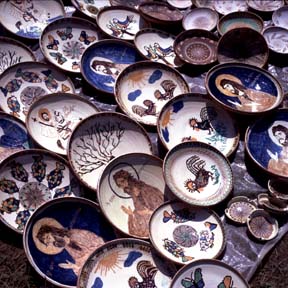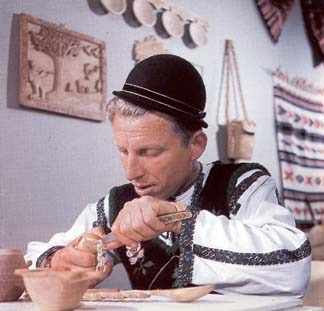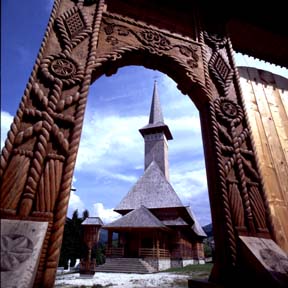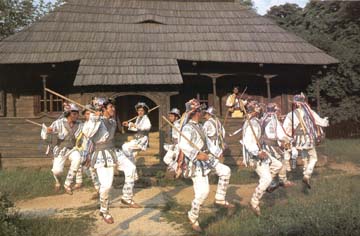Folk Costumes Romanian peasant costumes are distinctive to their regions, their geographic and climatic conditions, local occupations and crafts, and to ancient ceremonial traditions. While both men's and women's costumes are characterized by a primarily white background and colorfully embroidered wide-sleeved shirts, the women don bright aprons worn front and back, and either white silk or black patterned head scarves. Men wear wide belts with punched motifs or braided strips, embroidered sheepskin vests, boots, and hats representing their specific region.
Pottery The origins of Romanian pottery are lost in the mist of time. Ancient Roman or Dacian traditions can be traced in the black, red or white pottery made in over 200 potters' centers around the country. Designs are unique to their regions. Among them are: Horezu & Oboga in Oltenia, Tansa & Radauti in Moldavia, Sacele & Corund in Transylvania.
Glass and Egg Painting The ancient craft of painting on glass has been preserved in Romania's villages. The subjects of the paintings are inspired by Romanian life and by religious themes. The craft is active in the Transylvanian areas of Fagaras, Lazu, Sibiel and Sibiu and Brasov counties. Collections can also be seen in the Brukenthal museum in Sibiu, and in the Romanian Art Museum in Bucharest.
Another type of Romanian artwork is seen its on painted eggs. Intricate and colorful designs painted on hollowed eggshells are one of the most popular folk art decorations.
Wood Carving Romanian wood carvers are skilled artisans, creating handsome household items such as spoons, ladles kitchenware, dowry chests, benches, cupboards, and musical instruments like flutes, shepherd's popes, and fiddles. Their intricate designs are also an important element of rural home furnishings and decor.
Architectural Design The extraordinary craftsmanship of Romania's woodworkers is best seen in their buildings. Throughout the countryside, rural homes are not only built of wood, but their exteriors display elaborately carved decoration. The wooden churches and gates of Maramures are the finest examples of this work. The old tall-spired wooden churches, hand-built without using metal nails, have withstood several centuries. Large wooden portal gates are covered with with hundreds of beautifully carved designs, dominated by the signs of the sun and the rope (which symbolizes the thread of life).







